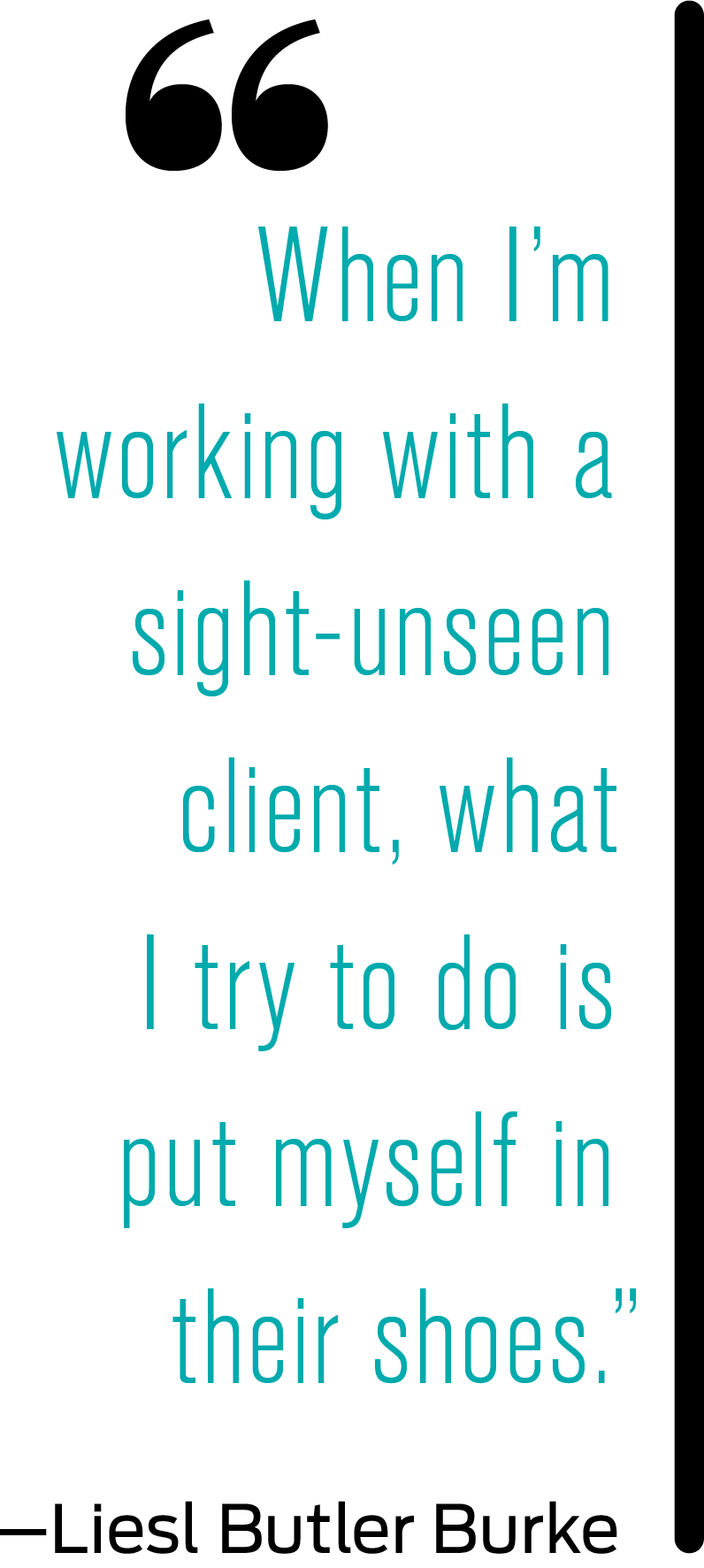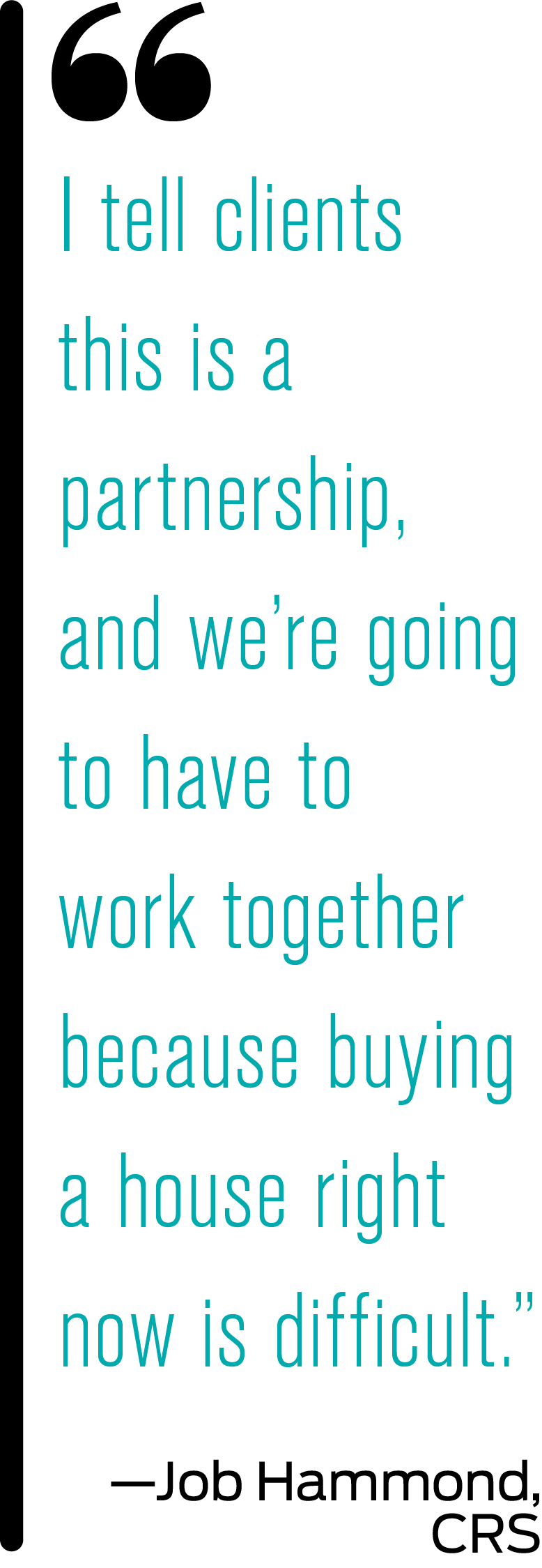Buying homes sight-unseen continues to trend, and agents must assist their clients with these purchases
By Andrew Conner
Even before the coronavirus pandemic, more and more homebuyers were buying homes sight unseen.
 According to Redfin, 63% of buyers made a sight-unseen offer in 2020, almost double the number who did so in 2019. This explosion in sight-unseen offers is due to several factors: better, more comprehensive virtual touring options, an increasingly competitive housing market and more properties being bought as investments, to name a few. Not surprisingly, the trend continued in 2021, as pandemic restrictions limited the ability to see properties in person.
According to Redfin, 63% of buyers made a sight-unseen offer in 2020, almost double the number who did so in 2019. This explosion in sight-unseen offers is due to several factors: better, more comprehensive virtual touring options, an increasingly competitive housing market and more properties being bought as investments, to name a few. Not surprisingly, the trend continued in 2021, as pandemic restrictions limited the ability to see properties in person.
When buying a home sight unseen, there is a clear risk: What if the buyer doesn’t like something about the house that isn’t conveyed by the virtual tour or online photos? That’s where the agent comes in. For many agents, successfully representing your client in a sight-unseen transaction means performing the same high level of service and due diligence you normally would, but also paying close attention to potential pitfalls.
Painting a full picture
The advent of 360-degree virtual tours and copious online photos for listings has made buying a home easier for sight-unseen buyers. However, there are always aspects of a property that can’t be captured through photos or video. One important role of the agent in a sight-unseen transaction is to communicate these things to the client.
“When I’m working with a sight-unseen client, what I try to do is put myself in their shoes,” says Liesl Butler Burke, REALTOR® at 1st for Orlando Realty in Orlando, Florida. “I think about if I was buying the property, what would I be looking at?” Burke explains that she often utilizes WhatsApp to share video from the house when she is touring it, and during the tour she will share her thoughts. “When I’m doing a video, I’m always more careful to ensure nothing is missed, compared to when I have the buyer beside me. When the opportunity arises during the showing—if a view is not what the buyer is looking for or an appliance is in bad shape—I will say right then that is something they have to bear in mind.”
Job Hammond, CRS, broker associate at Dash Realty in Austin, Texas, takes a similar approach for sight-unseen clients, making a comprehensive video for each property he visits: “As I’m driving through the neighborhood, maybe a minute before I arrive at the house, I’ll take neighborhood video shots to allow clients to see what I see for the last minute of the drive,” says Hammond. “For clients with directional preferences, I’ll take out my compass app on my phone and screenshot that. And then starting from the outside, I pan from the outside and go room to room, panning through each room and discussing features that I think they might want to hear and see—whether it is positive or negative. It’s not a sales pitch; it’s informational. If I think or see or smell or hear something, I will say it on the video.”
Building trust
Beyond providing your clients with important information for them to base their decision on, using video and giving your honest opinion on a home’s health helps build trust. Showing your expertise and the value you provide to the transaction is key in establishing good rapport with a client who will never view the home they are buying.

“One of the most common questions you get is: How’s the market?” says Hammond. “90% of agents will have a two-word response, ‘It’s great.’ But that doesn’t build trust or rapport. In my market in Austin, I will describe the expected population growth, employment trends—explaining which companies are bringing more jobs to the area—and other aspects of the local market. I also go over my experience in multiple offer situations and set expectations. I tell clients this is a partnership, and we’re going to have to work together because buying a house right now is difficult.”
Bruce Ailion, CRS, REALTOR® and attorney at RE/MAX Town & Country in Alpharetta, Georgia, echoes Hammond’s comments and adds that being upfront with sight-unseen clients and setting expectations is key to not only having a good relationship with your client, but also successfully completing a transaction.
“Today, you’re not trying to get a good deal, you’re just trying to buy,” says Ailion, whose sight-unseen clients are usually investment buyers who won’t be living in the homes they purchase. “You have to explain to clients that, in this market, you might have to sacrifice a precontract inspection or contingencies, for example. The buyer has to understand and expect that not only will they likely pay a premium price, but they also may need to pay more after the transaction to get the house into the state they want it.”
Considering contingencies
Ailion brings up an important aspect of buying homes sight unseen: contingencies and ways to get out of the transaction if the buyer has remorse at a late stage. For many agents, it is fortunately a rare situation; however, it is important to protect your clients in the event that they step foot in the home for the first time and something isn’t right.

“In our market in Georgia, the seller does the disclosure, and we’re a ‘buyer beware’ state, so the buyer has a duty and obligation to do an inspection,” says Ailion. However, in an extremely competitive market, you may have to waive the inspection to even have your offer considered. So, what can you do?
“You need to make sure your client is comfortable with the fact that they may need to forfeit their earnest money if they get an inspection after the house is under contract and they want to pull out,” says Ailion. “You can always breach the contract. Most contracts will say the same thing: that in the event of a breach, you can’t sue for specific performance. In other words, the seller can’t force you to buy. So, all the seller can do is get your earnest money if you’re using a typical contract.”
While this may be an issue for homebuyers purchasing a home to live in—forfeiting earnest money multiple times can get expensive quickly—for Ailion’s investment buyers, it’s less of a concern. The market is so hot right now that it is seen as part of the cost of doing business.
Whether it’s through virtual tours or careful communication with your client, there are many actions you can take to help make a sight-unseen transaction successful for yourself and your clients.
It might take a little more attention or care on your part, but the result—a satisfied client—is worth the effort.
Virtual tours are more of a necessity than ever for sight-unseen buyers. The Power of Virtual Tours presents how to do them successfully. Visit CRS.com/catalogsearch for more.
Photo: iStock.com/shutter_m/MonthiraYodtiwong








